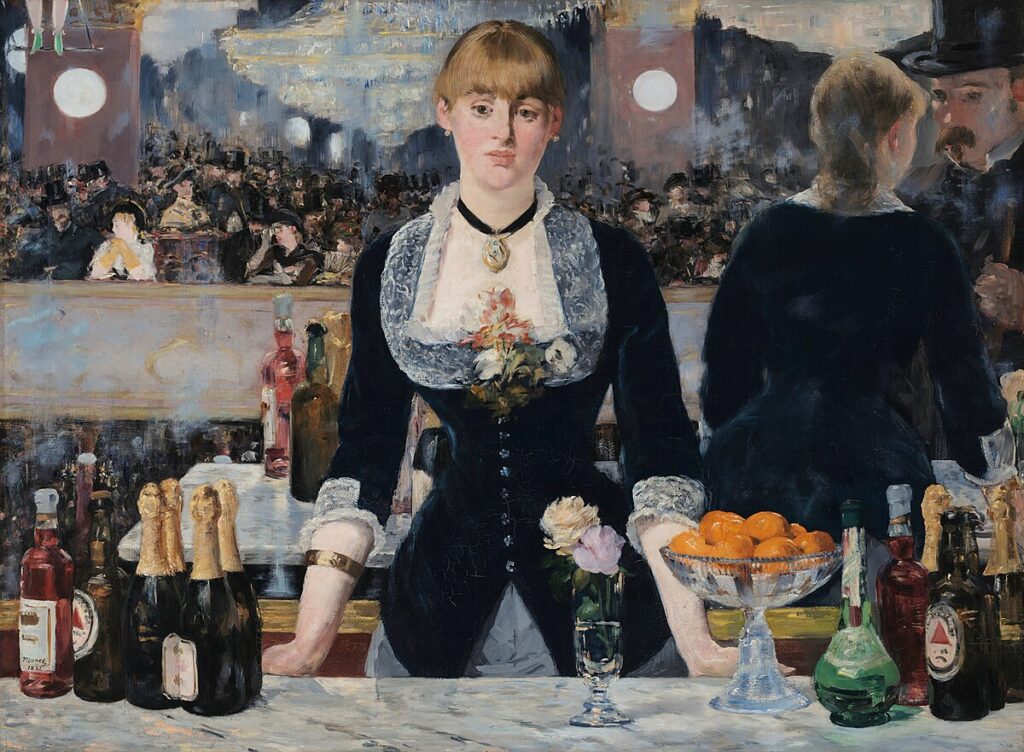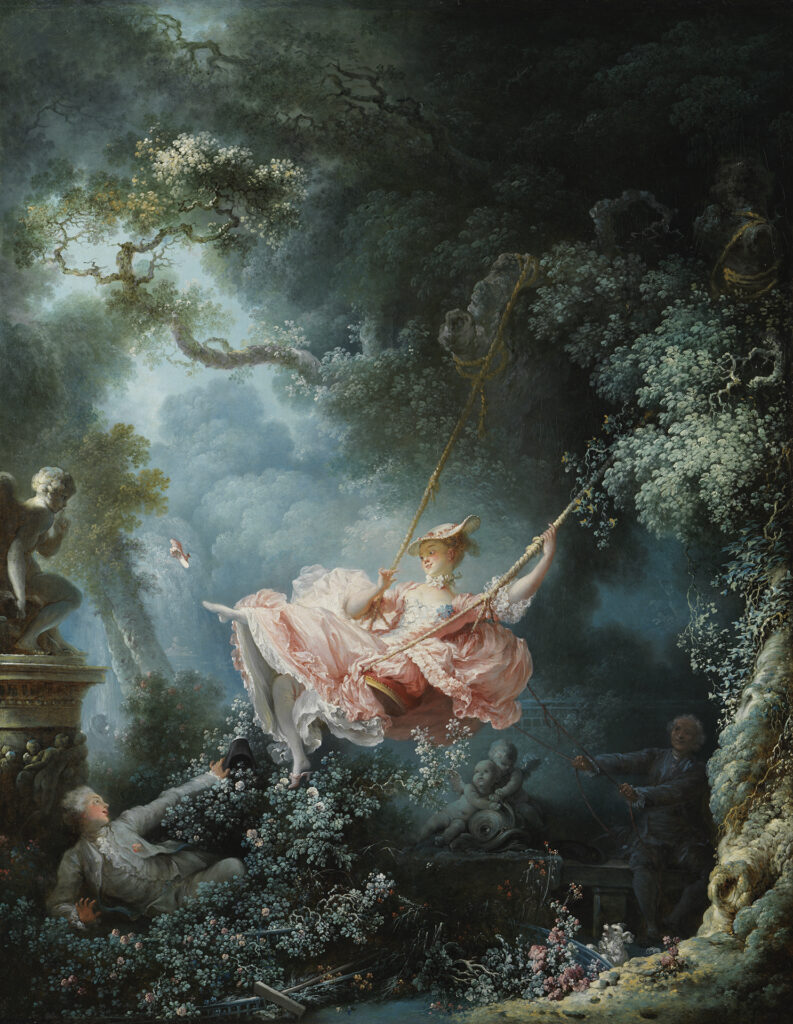Art has always been a means of expressing the aspects of life. Throughout history, artists have portrayed women in ways capturing their strength, vulnerability and the multifaceted nature of femininity. In this article, we delve into 16 famous paintings of women that offer insights into the lives and narratives of women. Lets not admire the beauty of these artworks on canvases but also explore the cultural contexts that envelop them.
1. Olympia by Édouard Manets

| Completion Date | 1863 |
| Dimensions | 130 cm × 190 cm |
| Location | Musée d’Orsay, Paris France |
When Édouard Manet’s “Olympia” was first showcased in Paris it created quite a scandal. This daring oil painting depicts a girl who confidently gazes directly at the viewer challenging conventions of depicting female in art. By using a model as the subject of art, Manet deviated from the idealized portrayals that were prevalent during the 19th century. This is one of the intriguing paint from the impressionist movement.
2. Whistlers Mother by James McNeill Whistlers

| Completion Date | 1871 |
| Dimensions | 144.3 cm × 162.4 cm |
| Location | Musée d’Orsay, Paris France |
In this depiction of Whistler’s mother, we can see a moment of tranquility and deep reflection. The painting captures the grace and resilience that is often associated with motherhood.
3. The Kiss by Gustav Klimts

| Completion Date | 1907–1908 |
| Dimensions | 180 cm × 180 cm |
| Location | Österreichische Galerie Belvedere, Vienna, Austria |
In this masterpiece by Gustav Klimts, we encounter a symbol of love and sensuality. The intricate patterns, tones and intertwined figures come together to create an elaborate work that celebrates the romantic and passionate aspects of relationships.
4. Les Demoiselles d’Avignon by Pablo Picasso

| Completion Date | 1907 |
| Dimensions | 243.9 cm × 233.7 cm |
| Location | Museum of Modern Art (MoMA), New York, USA |
This artwork challenges representations of the form, with its angular and distorted figures. Picasso breaks ground in the history of art with this remarkable composition.
5. Portrait of Adele Bloch-Bauer I by Gustav Klimt

| Completion Date | 1907 |
| Dimensions | 138 cm × 138 cm |
| Location | Neue Galerie, New York, USA |
On number 5th, we have Gustav Klimt’s portrait of Adele Bloch Bauer. A gem showcasing his Art Nouveau style. This painting stands as a testament to Klimt’s brilliance. The intricate golden designs and the captivating gaze of Adele add to the charm of this artwork.
6. The Arnolfini Portrait by Jan van Eyck

| Completion Date | 1434 |
| Dimensions | 82.2 cm × 60 cm |
| Location | National Gallery, London United Kingdom |
Jan van Eyck’s masterpiece “The Arnolfini Portrait ” showcases the realism and symbolic representation that characterize the Northern Renaissance era through its portrayal of both a woman and her husband.
7. A Bar at the Folies Bergère by Édouard Manets

| Completion Date | 1882 |
| Dimensions | 96.5 cm × 130.2 cm |
| Location | Courtauld Institute of Art, London, United Kingdom |
In his painting “A Bar at the Folies Bergère “, Édouard Manet captures the intricacies of life. This artwork explores the societal role of women. The barmaids’ distant expression and the contrast between reflection and reality contribute to the scene’s nature.
8. Woman with a Parasol – Madame Monet and Her Son by Claude Monets

| Completion Date | 1875 |
| Dimension | 100 cm × 81 cm |
| Location | National Gallery of Art, Washington, D.C.,United States |
Claude Monet’s painting depicts his wife, Camille alongside their son. Monet’s Impressionist style is characterized by the interplay of vibrant colors, which effectively captures the moments of outdoor scenes.
9. Judith Slaying Holofernes by Artemisia Gentileschi

| Completion Date | 1612–1613 |
| Dimensions | 199 cm × 162 cm |
| Location | Uffizi Gallery, Florence, Italy |
Artemisia Gentileschi’s portrayal of Judith Slaying Holofernes completed between 1612-1613 and housed at the Uffizi Gallery, in Florence, Italy. This artwork showcases the strength and determination of women. Through her composition and skillful use of chiaroscuro, Gentileschi brings heightened intensity to this biblical scene.
10. Portrait of Madame X by John Singer Sargent

| Completion Date | 1884 |
| Dimensions | 234.3 cm × 109.9 cm |
| Location | Metropolitan Museum of Art, New York, USA |
John Singer Sargent’s Portrait of Madame X finished in the year 1884. Currently displayed at the Metropolitan Museum of Art in New York City, USA caused quite a scandal during its time due to its nature. Through this portrait, Sargent skillfully captures the beauty and elegance of Madame Pierre Gautreau (known as “Madame X”) reflecting the social dynamics prevalent in the 19th century.
11. The Three Ages of Woman by Gustav Klimt

| Completion Date | 1905 |
| Dimensions | 180 cm × 180 cm |
| Location | Galleria Nazionale d’Arte Moderna, Rome, Italy |
Gustav Klimt’s masterpiece “The Three Ages of Woman ” completed in 1905 and was housed at the Galleria Nazionale d’Arte Moderna in Rome, Italy. This artwork delves into a woman’s journey through youthfulness, to motherhood and eventually old age. This painting beautifully explores stages of a woman’s life. The emotional depth of the painting is enhanced by the use of gold leaf and intricate patterns.
12. Lady Writing a Letter with her Maid by Johannes Vermeer

| Completion Date | 1670 |
| Dimensions | 72.2 cm × 58.4 cm |
| Location | National Gallery of Ireland, Dublin, Ireland |
Lady Writing a Letter with her Maid, painted by Johannes Vermeer around 1670, portrays a moment of contemplation. Vermeers skillful technique is evident in the depiction of light and attention to detail.
13. The Banjo Lesson by Henry Ossawa Tanner

| Completion Date | 1893 |
| Dimensions | 122.5 cm × 82.9 cm |
| Location | Hampton University Museum, Hampton, USA |
This painting challenges stereotypes. It captures a tender moment reflecting Tanner’s dedication to portraying the dignity of African Americans.
14. The Swing by Jean-Honoré Fragonard

| Completion Date | 1767 |
| Dimensions | 81 cm × 64.2 cm |
| Location | Wallace Collection, London, UK |
Jean Honoré Fragonard’s “The Swing,” created in 1767 is considered a masterpiece of the Rococo period showcasing the lightheartedness and sensuality prevalent in life. The focal point of this composition is a woman on a swing captured in a moment of flirtation.
15. The Birth of the Virgin by Francisco de Zurbarán

| Completion Date | 1660–1664 |
| Dimensions | 249.5 cm × 133 cm |
| Location | Museo del Prado, Madrid, Spain |
Painted by Francisco de Zurbarán “The Birth of the Virgin ” depicts the scene of the Virgin Mary’s birth. This religious artwork embodies Zurbaráns Baroque style, which emphasizes spirituality and devotion through its portrayal of women in contexts.
16. Portrait of Madame de Pompadour by François Boucher

| Completion Date | 1758 |
| Dimensions | 199 cm × 153 cm |
| Location | Alte Pinakothek, Munich, Germany |
In François Boucher’s painting “Portrait of Madame de Pompadour ”, we witness the embodiment of elegance and grace. Madame de Pompadour, a figure as King Louis XVs mistress is portrayed with presence in the Rococo style. The soft colors and fluid forms perfectly complement her persona.
Frequently Asked Questions
What is the most famous painting of a woman?
Mona Lisa by Leonardo da vinci was the most famous painting of a woman which is widely known for her mysterious smile and everlasting beauty.
Who are some famous female painters throughout history?
Throughout history, there have been many famous female painters who have made significant contributions to the art world. Some notable examples include Frida Kahlo, Georgia O’Keeffe, Mary Cassatt, Artemisia Gentileschi, and Yayoi Kusama.
Conclusion
These 16 famous paintings of women provide captivating insights into women’s lives across eras and artistic styles. Each artwork does not showcase the artist’s skill but it also reflects the prevailing social perspectives and cultural shifts during their respective periods. Through these masterpieces, we gain an understanding of women’s roles, emotions and narratives that have left an indelible mark on the tapestry of art history.













